30 Companion Plants for Marigolds That Will Have You Saying Goodbye to Pests
Marigolds are the ultimate best friend for your vegetable and flower gardens.
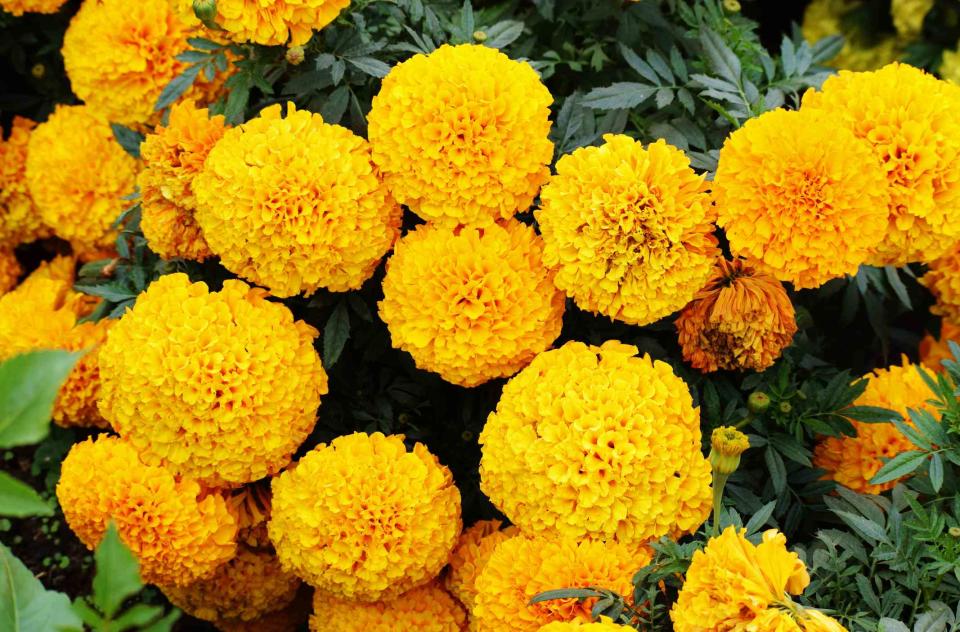
Ravinder Kumar / Getty Images
The colorful blooms of marigolds (Tagetes spp.) are a favorite of gardeners looking for an easy-to-grow annual that brings reliable vibrance to flower beds—but they're also a favorite of those who want the ultimate companion plant. Marigolds are known for their ability to attract and distract some of the arch enemies of gardeners, like aphids and cutworms, keeping these bugs away from the vegetables that they could easily decimate.
Marigolds also give off an odor that repels other garden pests like rabbits, while attracting pollinators with their warm, brilliant colors. Whether you focus on vegetables, herbs, fruit, or flowers, there's a good chance that planting marigolds is one of the best companion plants you can introduce to your garden.
What Is Companion Planting?
Companion planting is when you place two plants side-by-side that will help the other thrive. This could be because the attract or deter specific bugs and pests, they add nutrients to the soil the benefits the other, or they bring helpful pollinators to the garden.
30 Best Companion Plants for Marigolds
Ready to introduce cheerful color and a hardworking companion plant to your garden? These are 30 of the best companion plants that benefit from growing alongside marigolds.
Basil
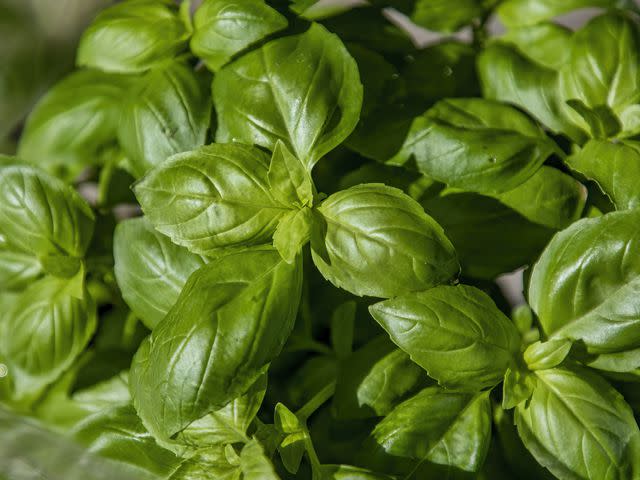
Ali Majdfar / Getty Images
Both basil and marigolds have strong scents that are appealing to humans but are a deterrent for some of your garden's most destructive pests. Together, they'll repel everything from aphids to nematodes, and the marigolds will keep slugs away from your basil.
Garlic
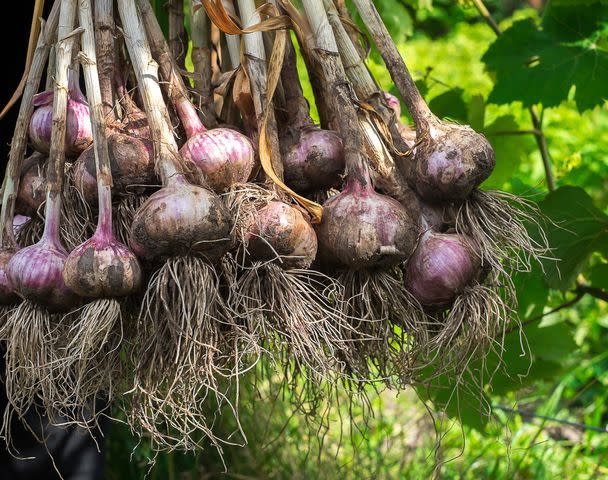
Anna Kurzaeva / Getty Images
In most cases, marigolds are the helper in the companion plant relationship, but garlic pulls its weight too. The potent aroma of garlic will repel everyone from spider mites to deer to snails.
Tomatoes
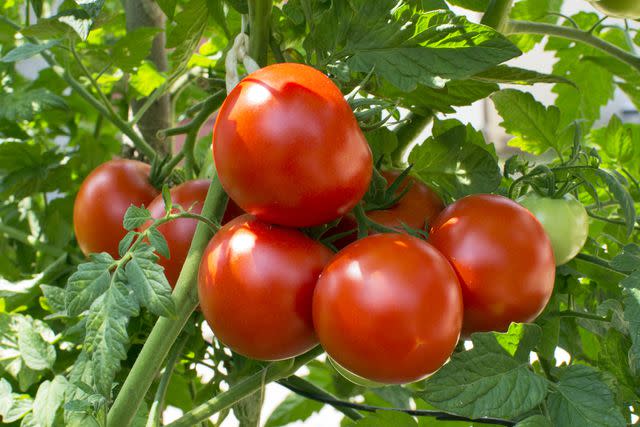
Helios4Eos / Getty Images
When you plant marigolds and tomatoes together, the marigolds will repel tomato-loving nematodes, keeping them away from from tomatoes' roots. Plus, marigolds will attract pollinators like bumble bees which are helpful for tomato plants.
Cucumbers
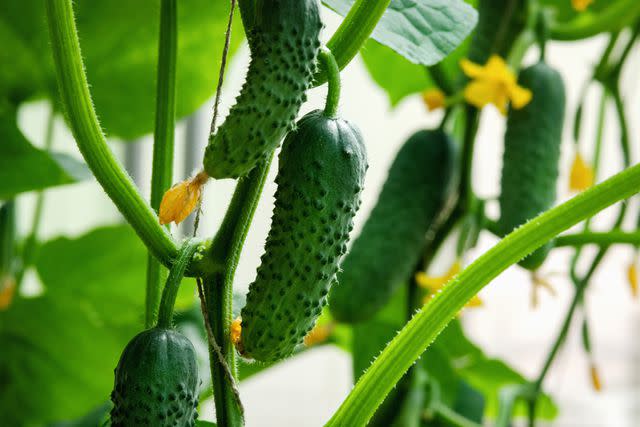
Sorin Banica / Getty Images
Squash bugs, white flies, and thrips will stay away from cucumbers thanks to the musky, green, and spicy fragrance of marigolds. That means you'll have an abundant crop of cucumbers all summer long without the worry of intrusive bugs.
Watermelon
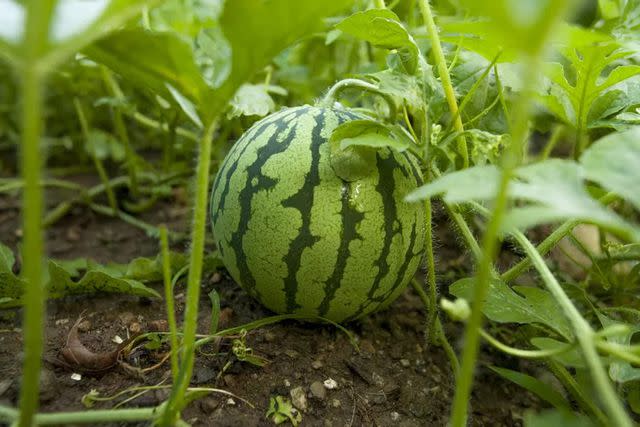
Jonathan R. Beckerman / Getty Images
Because watermelons rely on pollinators like bees to spark their fruit production, planting pollinator-attracting flowers like marigolds will help boost your harvest. Marigolds also trap aphids, which would otherwise go after your watermelons.
Pumpkin
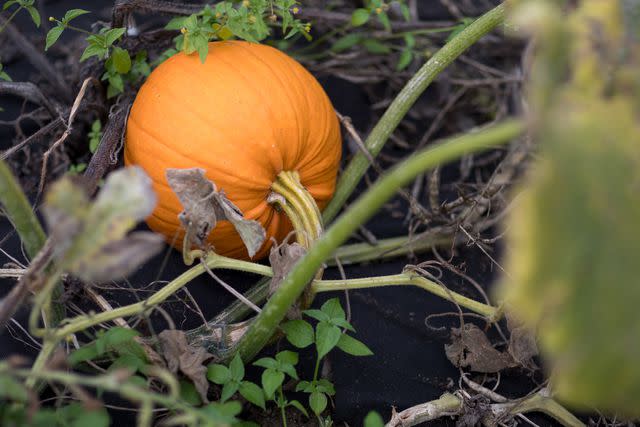
Kevin Trimmer / Getty Images
Marigolds will keep squash bugs, nematodes, and aphids away from your precious pumpkins, which is, of course the goal. But there's an added benefit—the vibrant oranges, yellows, and reds of marigolds combined with your pumpkins make for the most gorgeous autumnal color palette.
Eggplant
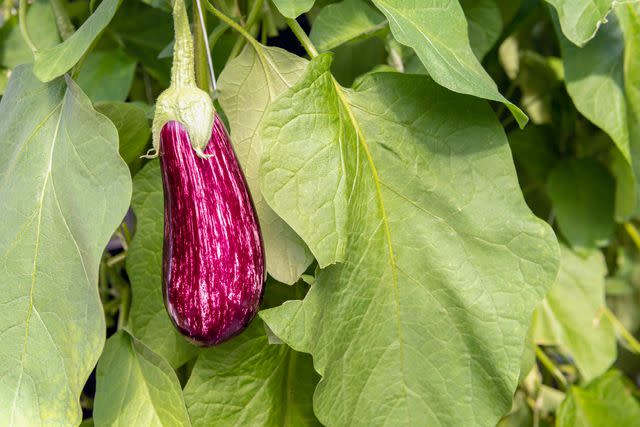
RuudMorijn / Getty Images
Root-knot nematodes are one of the biggest pest problems for eggplants, and marigolds' strong smell is excellent for repelling nematodes.
Asparagus
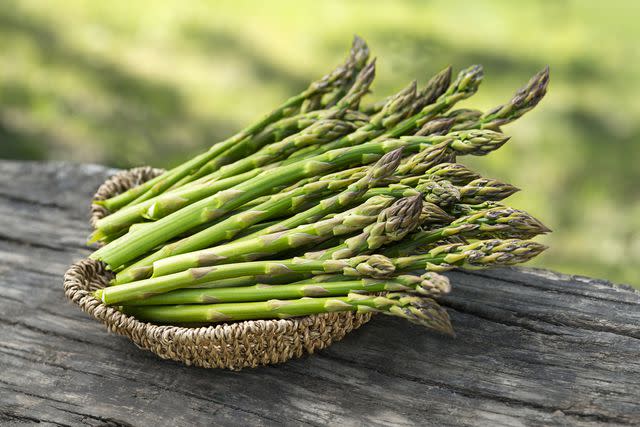
Getty Images/dulezidar
Don't want asparagus beetles attacking your summer harvest? Plant them alongside marigolds. Marigolds will repel the asparagus beetle, letting your spring vegetables thrive.
Carrots

Getty Images/Dimitrie Ragar / 500px
Carrots reap two main benefits from marigolds. The first, of course, is insect repellant. Marigolds deter carrot rust flies and carrot psyllids. But, the second, is that marigolds will make your carrots sweeter and more delicious thanks to increasing the carotenoid content and sugars within the carrots.
Summer Squash
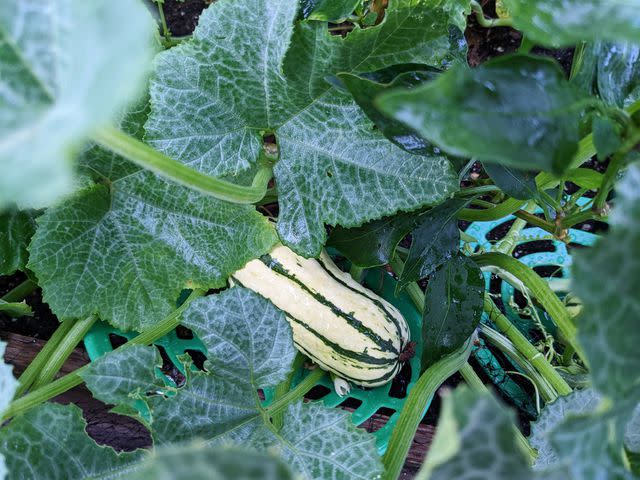
Photo by Cathy Scola / Getty Images
Keep squash beetles, squash vine borers, and nematodes away from your summer squash by planting them near marigolds, while also attracting pollinators to your gorgeous squash blossoms.
Bell Peppers

Vasin Hirunwiwatwong / Getty Images
Bell peppers benefit from the nematode-repelling qualities of marigolds, but they also thrive in similar growing conditions. Both are sun-loving plants that do best with full sun.
Onions
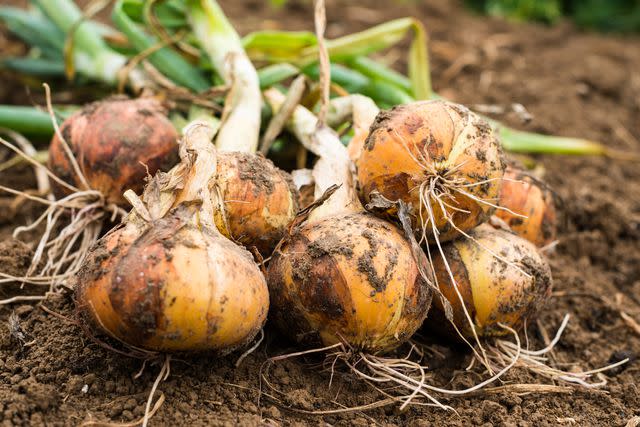
rootstocks / Getty Images
Roundworms and root-knot nematodes are two of the biggest onion predators, and both will steer clear of an area where marigolds are growing. Plus, marigolds will keep away rodents that might dig up your below-ground onions.
Radishes

Howard Grill / Getty Images
Flea beetles and aphids can do a number on your radish crop, but, if you plant marigolds nearby, their scent will tell these pesky bugs to stay away.
Strawberries
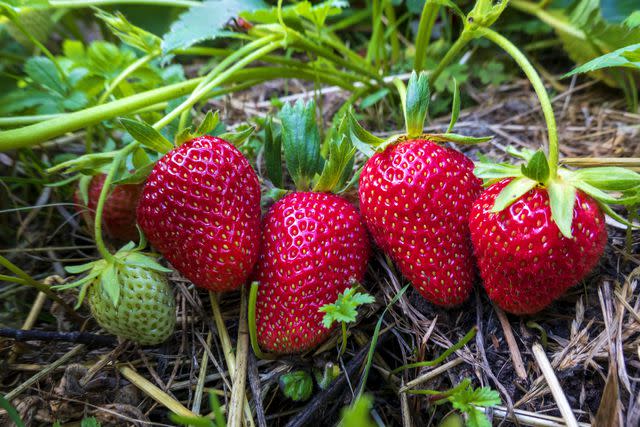
Getty Images/Westend61
Sun-loving strawberries and marigolds both do well in the heat of summer and don't mind the occasional drought. The marigolds will also keep deer and rabbits away, both of which love to feast on sweet summer strawberries.
Lettuce
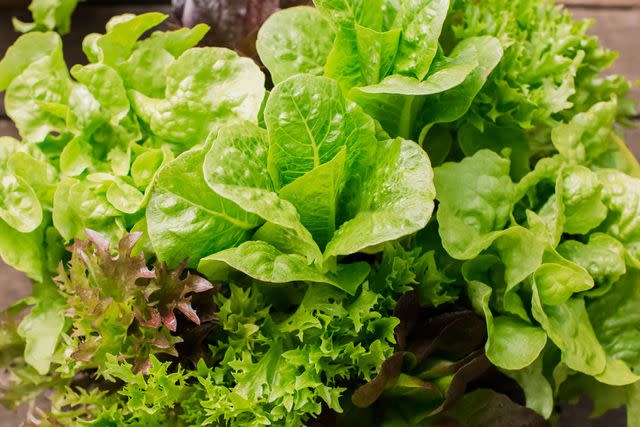
The Spruce / Kara Riley
Nematodes and aphids, the two enemies of summer gardens, will stay away from your lettuce thanks to marigolds, but there's one more insect benefit. Marigolds will stop slugs in their tracks, taking the hit before the slugs reach your lettuce crop.
Potatoes

mrs / Getty Images
By planting marigolds, you're telling the troublesome Colorado potato beetle to stay far away from your summer potato harvest. Plus, if you're looking for a garden that's as pretty as it is productive, marigolds will also add some much-needed color to an otherwise dull potato plant.
Chives
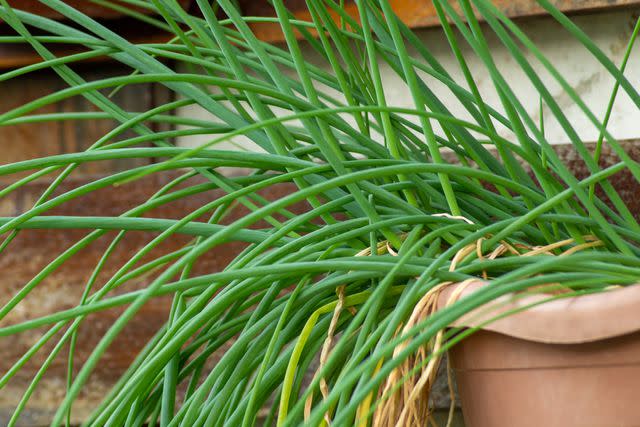
Ana Luiza Serpa / Getty Images
ChivesWhile aphids and nematodes can threaten your chives, both insects won't come around when they realize marigolds are present. Marigolds will also attract butterflies, which will take care of any of the aphids that do try to make an appearance.
Lavender
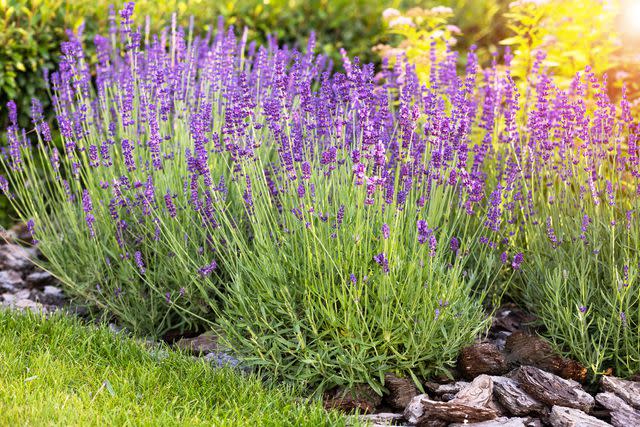
Katya Slavashevich / Getty Images
Drought-tolerant and sun-loving, marigolds and lavender have lots in common. Both of these plants attract pollinators, and rabbits and deer tend to steer clear. They'll get along beautifully in a summer through fall garden.
Cilantro
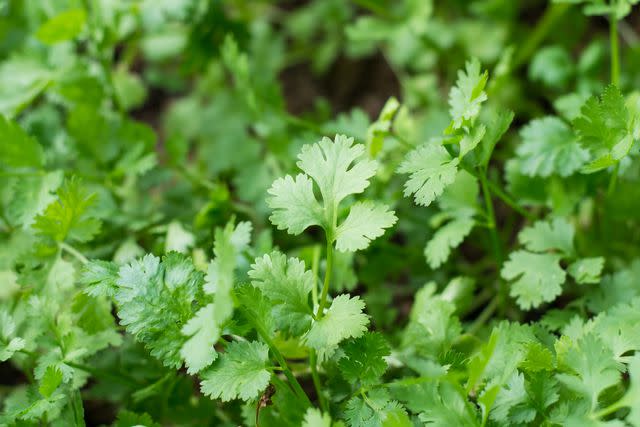
Tevarak / Getty Images
Marigolds and cilantro will naturally repel many of the same insects, though cilantro needs moisture more than marigolds. That means these two are great companions before or after the height of summer's heat.
Sage

Bonnie McCann / Getty Images
Not only do the purple flowers of sage plants pop against the warm yellows, reds, and oranges of marigolds for a stunning garden color palette, but both plants are drought-tolerant. They grow together well under the same conditions.
Oregano
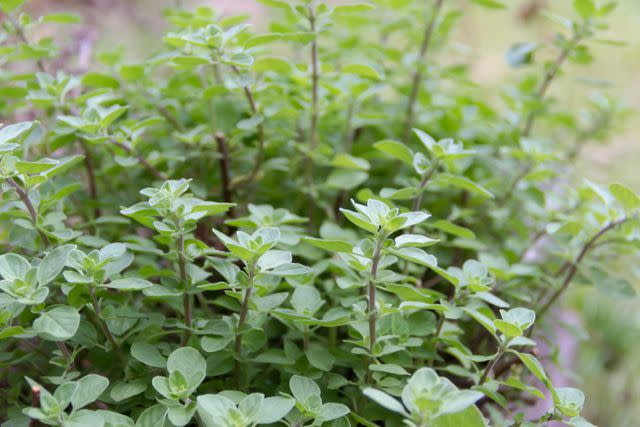
gabrielabertolini / Getty Images
Whiteflies, aphids, and nematodes are all likely to stay away from your oregano plants when marigolds are planted nearby. Plus, these two both do well in sunny, drought-tolerant conditions.
Thyme
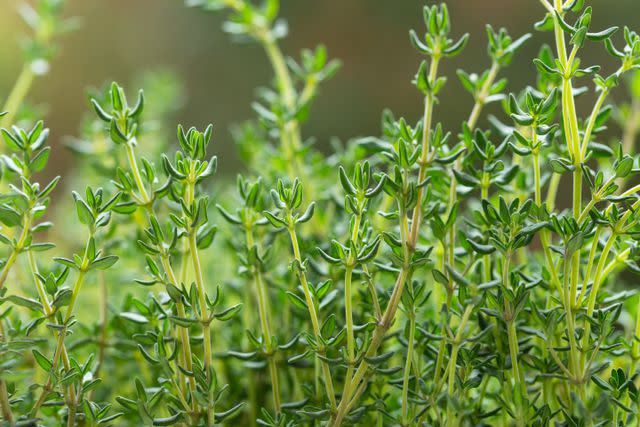
Yulia Naumenko / Getty Images
Thyme and marigolds are both known for their ability to keep bad insects away from your garden, so if you plant both as a border, you'll have a powerful combination. Try the low-growing thyme in front of the marigolds to create a pest-repelling fence.
Dill
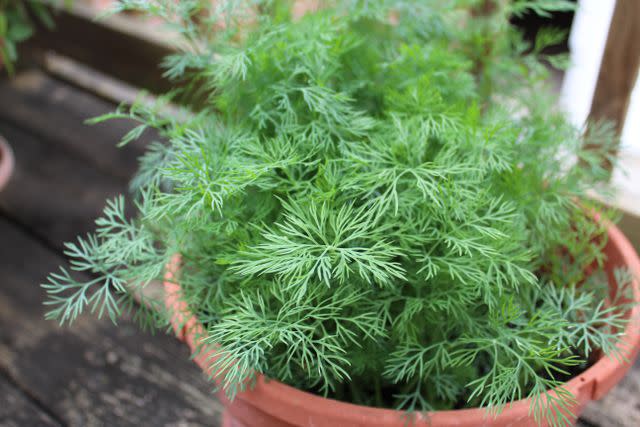
Nicholas Kostin / Getty Images
Pests like caterpillars, slugs, and rabbits love dill as much as humans do, but, thankfully, they'll stay away when marigolds are present in your garden.
Dusty Miller
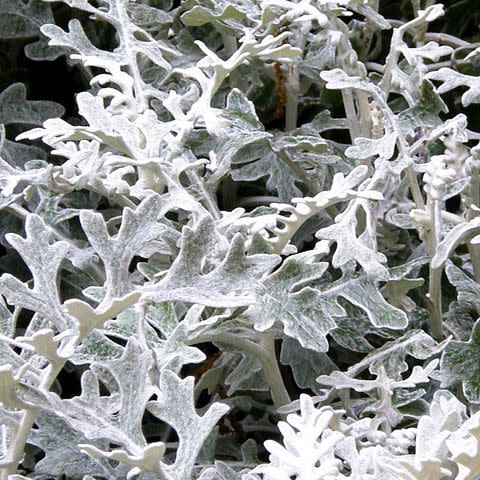
If you're looking for a splash of color with your dusty miller, then add the warm tones of marigolds. Despite its wintery look, dusty miller does best in hot, full sun, drought conditions—just like marigolds.
Salvia
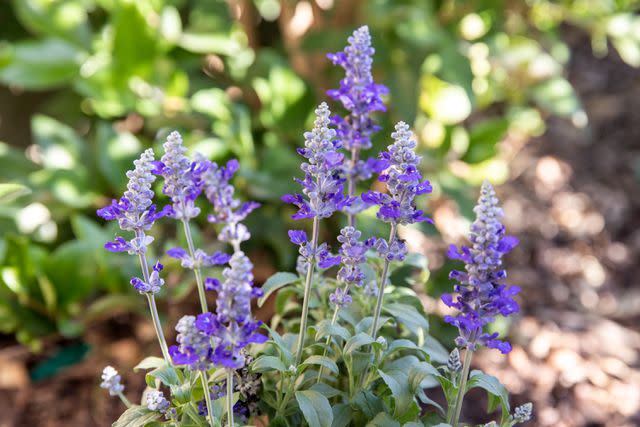
The Spruce / Krystal Slagle
Salvia and marigolds are both sun-loving plants that thrive in the heat, and their vibrant colors make for the perfect pollinator garden. The vibrant purple and vivid oranges, reds, and yellows will bring in enthusiastic bees and butterflies.
Gerbera Daisies
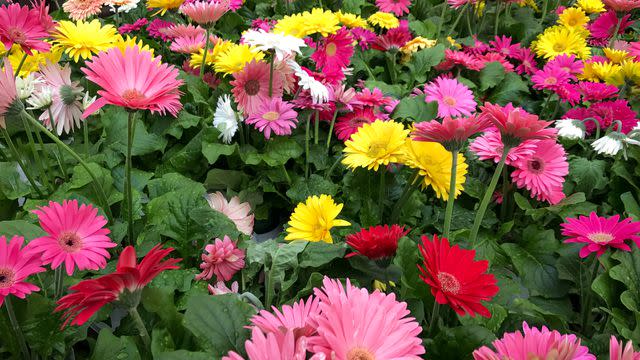
Tammi Mild / Getty Images
Not only will marigolds trap the aphids and whiteflies that threaten your cheerful gerbera daisies, but the combination of colors between the two blooms makes for the most brilliant and happy summer garden.
Asters
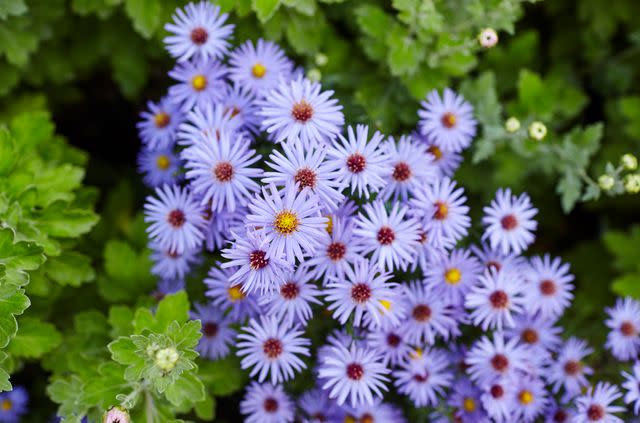
Plant marigolds and asters in the same sunny spot, and these two cheery and vivid summer blooms will thrive in the full sun, hot conditions. Plus, they both attract pollinators to keep your garden thriving.
Cornflower
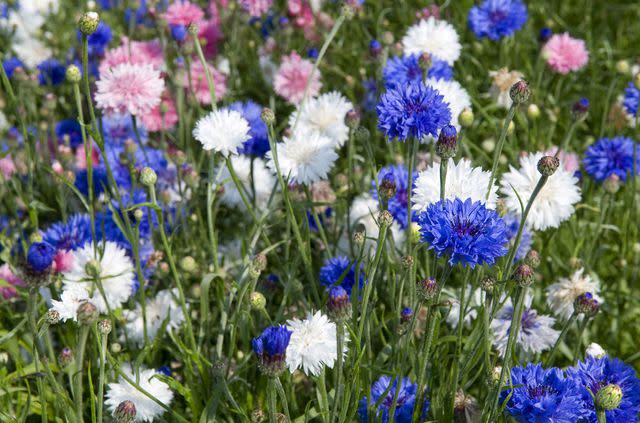
David Burton / Getty Images
To create the ultimate pollinator garden, make sure you have lots of vibrant colors to attract bees and butterflies. Planting marigolds alongside the cornflower blue bachelor buttons creates a feast for pollinators' eyes.
Roses
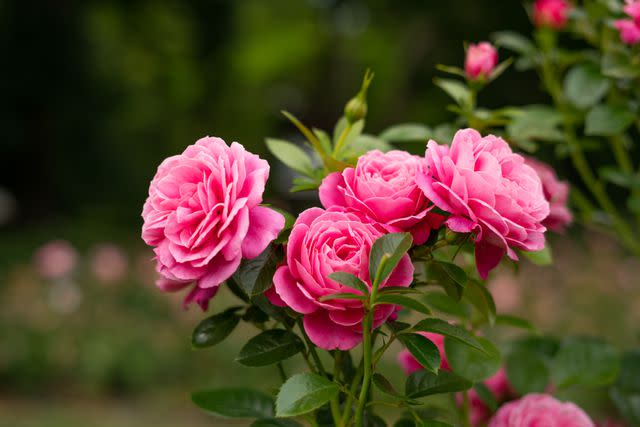
Maryia Kulinskaya / Getty Images
As beautiful as roses are, they often fall victim to pests in the garden. Luckily, marigolds repel many of those, including aphids, nematodes, and beetles.
Zinnias
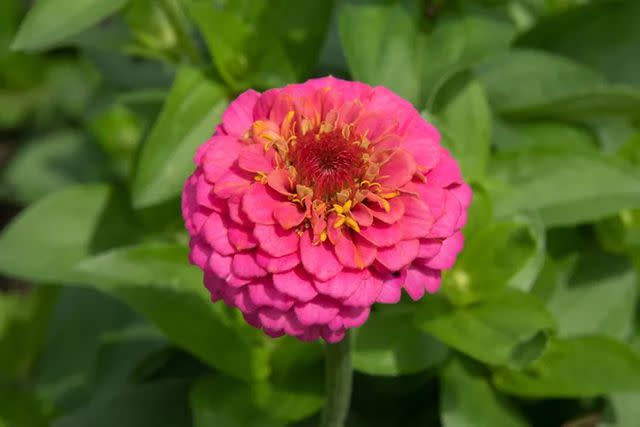
The Spruce / Letícia Almeida
Zinnias and marigolds thrive under similar conditions, including heat, full sun, and even some drought. These two closely related flowers make a striking combination when planted together.
Plants to Avoid Planting With Marigolds
While marigolds get along with almost every plant in the garden and are seen as a top companion plant for flowers, herbs, and vegetables alike, there are a few plants to avoid planting near marigolds. Both beans and cabbage are often cited as bad companion plants for marigolds, and it may have to do with chemicals that are released through the marigold's roots.
Frequently Asked Questions
Can marigolds be planted deep like tomatoes?
Yes, marigolds should be planted deeper than the depth at which you buy them from the nursery. Go ahead and bury some of the stem.
Can marigolds be planted in pots with other flowers?
Because marigolds have deep roots and require full sun, they're usually planted in a pot by themselves. However, you could plant them with flowers that have shallow roots and won't mind full sun.
Read the original article on The Spruce.

